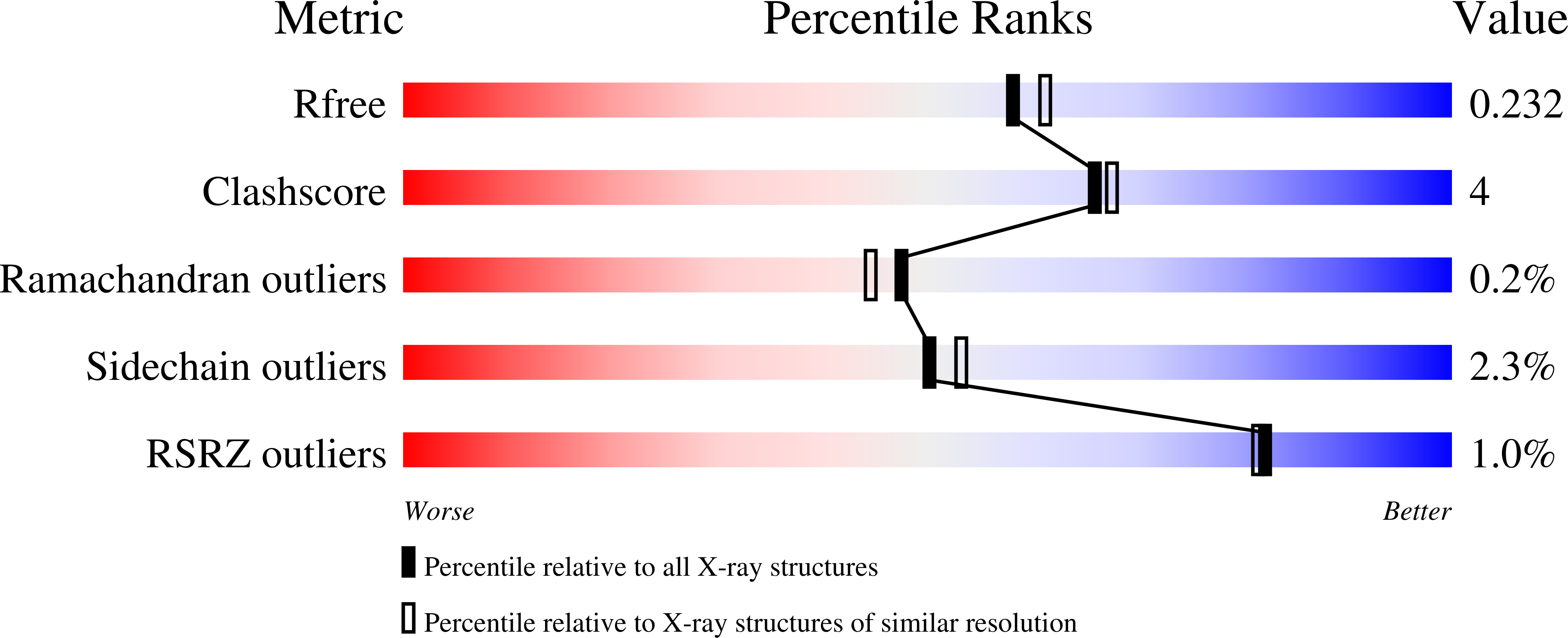Rational design of inhibitors and activity-based probes targeting Clostridium difficile virulence factor TcdB.
Puri, A.W., Lupardus, P.J., Deu, E., Albrow, V.E., Garcia, K.C., Bogyo, M., Shen, A.(2010) Chem Biol 17: 1201-1211
- PubMed: 21095570
- DOI: https://doi.org/10.1016/j.chembiol.2010.09.011
- Primary Citation of Related Structures:
3PA8 - PubMed Abstract:
Clostridium difficile is a leading cause of nosocomial infections. The major virulence factors of this pathogen are the multi-domain toxins TcdA and TcdB. These toxins contain a cysteine protease domain (CPD) that autoproteolytically releases a cytotoxic effector domain upon binding intracellular inositol hexakisphosphate. Currently, there are no known inhibitors of this protease. Here, we describe the rational design of covalent small molecule inhibitors of TcdB CPD. We identified compounds that inactivate TcdB holotoxin function in cells and solved the structure of inhibitor-bound protease to 2.0 Å. This structure reveals the molecular basis of CPD substrate recognition and informed the synthesis of activity-based probes for this enzyme. The inhibitors presented will guide the development of therapeutics targeting C. difficile, and the probes will serve as tools for studying the unique activation mechanism of bacterial toxin CPDs.
Organizational Affiliation:
Department of Chemical and Systems Biology, Stanford University School of Medicine, 300 Pasteur Drive, Stanford, California 94305, USA.


















